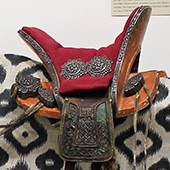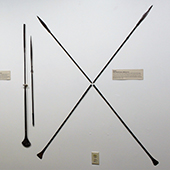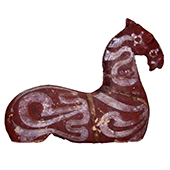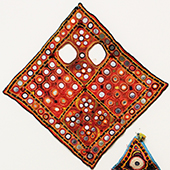Sport

Many people most associate horses with leisure activities, competitions, and sports. The Kentucky Derby, trail riding, dressage, polo, barrel racing, and many other events have popularized the concept of equestrian sports. The rules of each sport vary, along with the required equipment, dress, and setting. While some sports are recognized internationally, many are regionally specific and retain local character. Despite these differences, each sport tests the relationship between horse and rider through demanding maneuvers or difficult riding conditions.
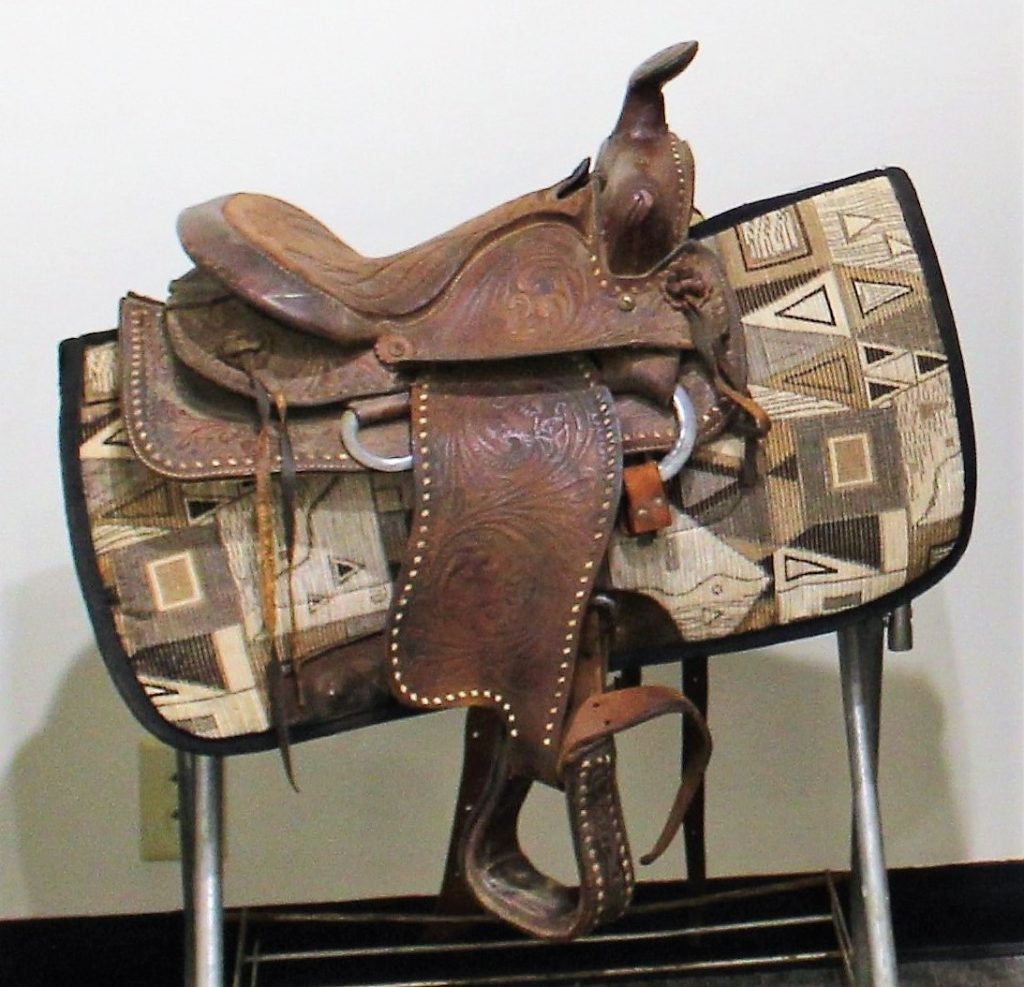
Saddle
United States, Early 21st Century, Loan from Martine Sherrill
Saddles used in the Western style of riding developed from the rugged gear used for American ranch work, such as herding and roping. The horn at the front and the raised back provide security and comfort for the rider. These saddles are easily recognizable due to their presence in films and other popular media as a piece of traditional ‘cowboy’ gear.
Saddle
France, Late 20th Century, Loan from Martine Sherrill
Saddles used in the English style of riding are designed to give the horse more freedom to move in activities like jumping and running. English style saddles have changed slightly since their inception in the 18th century but have kept their sleekness and smaller seat size. This kind of saddle is used during Olympic competition.
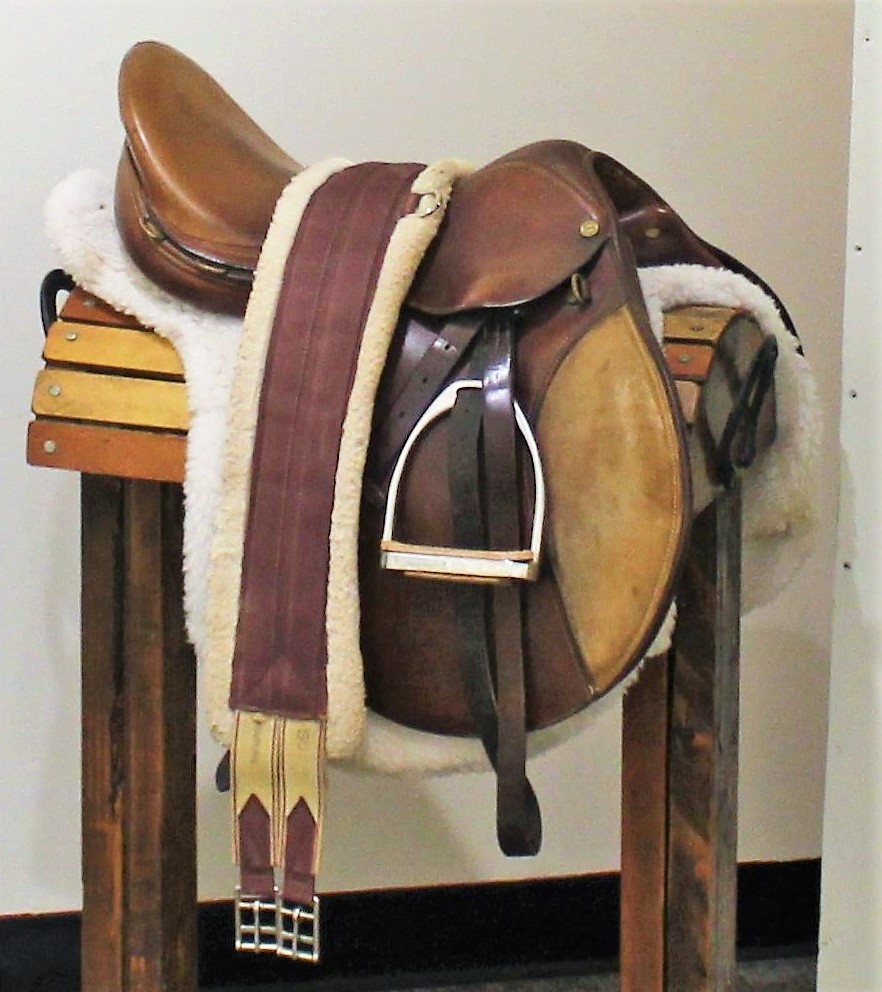
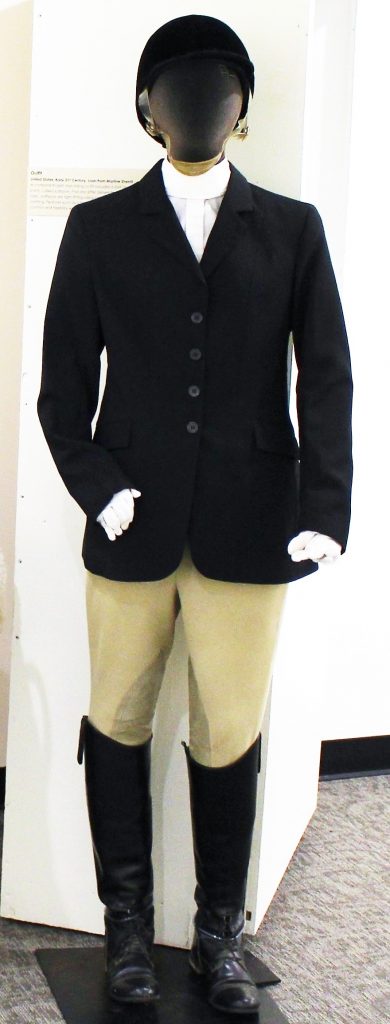
Outfit
United States, Early 21st Century, Loan from Martine Sherrill
A complete English style riding outfit includes a shirt and boots as well as pants, called jodhpurs, that are differ depending on the event and riding style. Jodhpurs are tight-fitting riding pants adapted from traditional Indian clothing. Features such as a flared thigh and padding are designed for comfort and flexibility when riding.
Explore the other sections of this exhibit below
